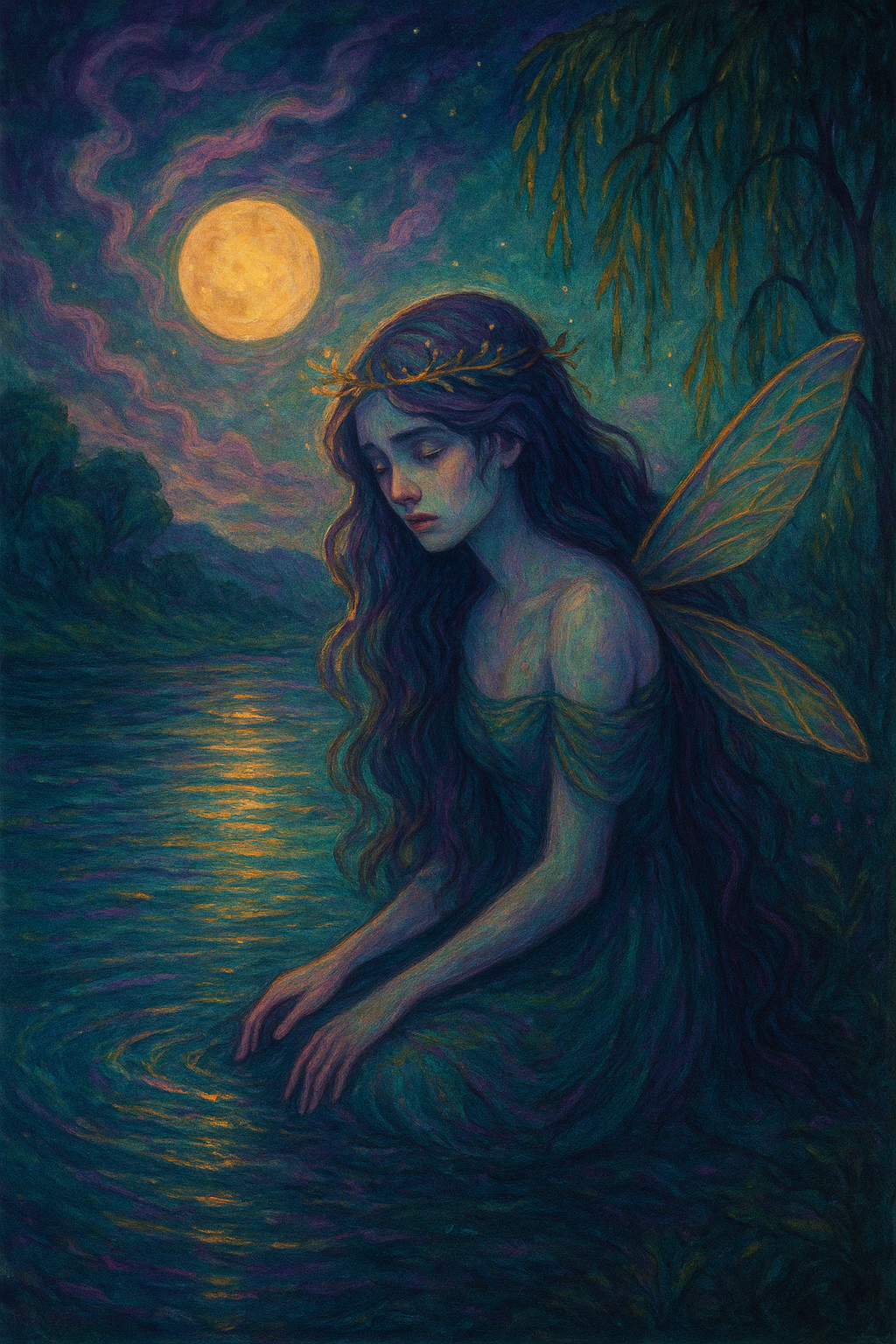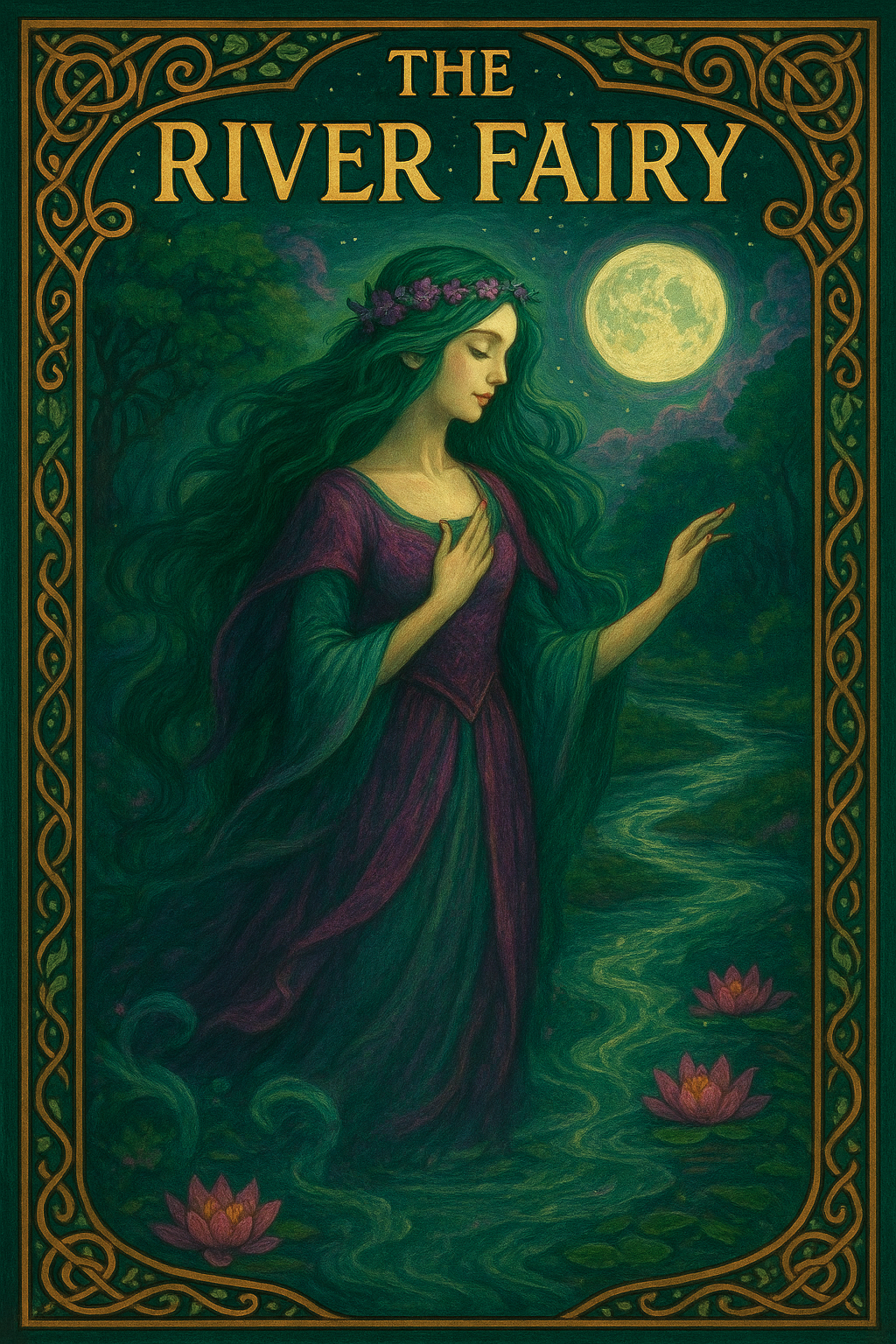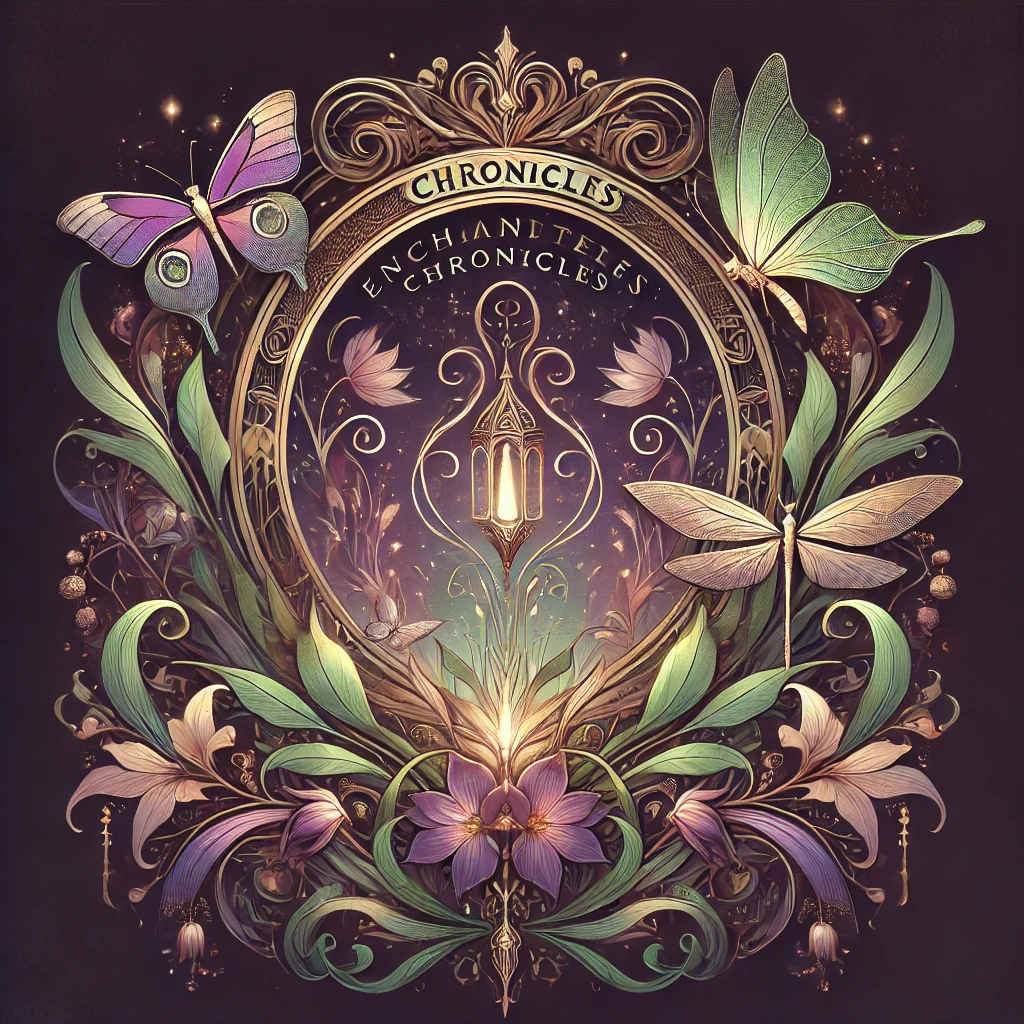The Danube hides secrets… the River Fairy calls those who listen
Between the bends of the Danube and the whispers of the wind, a timeless melody lingers. Learn about the River Fairy, the haunting spirit born of heartbreak, and the folklore that continues to enchant the heart of Central Europe.

Elaris Windglimmer

The Song of the River Fairy: The Haunting Melody of the Danube
Beneath the silver moonlight, where the Danube weaves its way through the heart of Central Europe, whispers of an ancient lament can sometimes be heard. It is not the rustling of leaves or the gentle murmur of the water, but a song—a ghostly melody that drifts along the riverbanks, captivating those who dare to listen.
This is the legend of the River Fairy, a mysterious maiden whose sorrowful tune tells a story of love, loss, and the timeless bond between mortals and spirits.
Origins of the Legend: A Tale of Love and Sorrow
The origins of the Song of the River Fairy stretch back to the medieval era, a time when folklore and reality were deeply intertwined. According to Legend, the fairy was once a mortal woman—a beautiful young maiden named Ilona, who fell in love with a gallant knight. The lovers would meet in secret by the Danube’s edge, their hearts bound by an unbreakable promise.
However, fate was cruel. The knight was called to battle, swearing he would return, but he never did.
Some say he perished in a distant war, while others claim he was betrayed and imprisoned by a jealous rival.
Heartbroken, Ilona would wait on the banks of the river, her sorrow transforming her into an enchanted spirit.
With each passing night, her grief took the form of an ethereal song, forever echoing across the waters as she searched for her lost love.
Some say she threw herself into the river, seeking to reunite with her beloved in the afterlife.
Others whisper that the Danube itself embraced her, turning her body into mist and her soul into an eternal song.
When night falls along the banks of the Danube, when mist swirls over the dark waters, and the wind whispers through the willow trees, a melody sometimes rises, carried by the currents. Soft, melancholic, almost unreal.
Fishermen pause, travelers shiver, and the village elders lower their voices.
For they all know the legend. It is The Song of the River Fairy, an enchanting tune that lingers through time, an echo of a lost love.
Since that night, generations have claimed to hear a mysterious song floating over the water, especially during full moons or when distant storms loom over the horizon.
Sailors say it calls to them, lures them, urging them closer to the river’s treacherous depths.
Some believe Ilona never died but instead became a tündér, a river fairy, forever wandering the banks, singing for the love she lost. It is said that those who hear her song must close their eyes and resist the urge to follow. For if they get too close, the water will part beneath their feet, and they will be pulled into the depths, joining the lost souls of the Danube.
The Danube’s Role in Hungarian and Central European Folklore
The Danube is more than just a river; it is a living thread woven through centuries of culture, myth, and history. Flowing through multiple countries—including Germany, Austria, Slovakia, Hungary, and beyond—it has long been associated with mystical beings, from water nymphs and sirens to hidden river divinities.
In Hungary, water spirits or sellők (mermaid) are known to reside in lakes and rivers, often luring unsuspecting travelers into their depths. The River Fairy, however, stands apart—she does not wish to deceive or ensnare, only to find her beloved. Her song is said to be both a blessing and a warning: those who hear it may be granted insight into their own hearts, but if they ignore it, they risk being drawn into the river’s eternal embrace.
When and How to Experience the Legend
If you want to immerse yourself in the legend’s atmosphere, autumn is the perfect time. The rising Danube mist, the crisp night air, and the golden leaves create the ideal setting for ancient stories to awaken. There are several locations along the Danube in Hungary and Austria that are believed to be touched by the fairy’s presence. Among them, the Danube Bend near Visegrád is a particularly atmospheric place, where the river curves dramatically beneath mist-shrouded hills.
Why not take the journey?
A solitary walk along the riverbank, a moment of silence under the glow of the moon…
And if you listen closely, perhaps you’ll hear a distant song, a voice calling from another time.
But beware. For if the River Fairy chooses you, you may never return.
The best time to seek the Song of the River Fairy is during autumn or early spring, when the water runs high and the mist lends an otherworldly quality to the landscape. Some locals claim that her melody is most clearly heard on nights of the full moon, especially when the river is calm.
Traditions and Artefacts: Honoring the Fairy’s Spirit
Throughout History, those who have encountered the River Fairy’s song have sought ways to honor or protect themselves from her influence. Fishermen and sailors once carried small silver charms shaped like water lilies, believing these tokens could offer protection from her sorrowful pull.
In some villages, offerings of white flowers are still left by the riverbanks, symbolizing hope and peace for lost souls.
For a more immersive experience, visitors can explore local folklore festivals, where traditional Hungarian music and dance often incorporate the themes of water spirits and tragic love stories.
The Danube Folk Festival in Budapest is a wonderful opportunity to witness the longlasting influence of these myths in Hungarian culture.
Echoes of the Legend Today
Though centuries have passed, the legend still lingers in the hearts of locals and travelers. Even today, some villages warn children not to play too close to the river at dusk.
Fishermen whisper quiet prayers before setting sail, and some leave offerings—white flowers or silver coins—on the riverbank in hopes of appeasing the fairy’s restless spirit.
For those who wish to experience the legend firsthand, several places along the Danube offer an immersive journey into its haunting beauty:
- Visegrád and the Danube Bend: This region is filled with misty trails and breathtaking river vistas where Ilona’s song is said to echo between the cliffs.
- Margaret Island, Budapest: A place steeped in myths, this island in the heart of the Danube has long been associated with enchanted stories.
- Night Cruises on the Danube: As the city lights flicker and the river darkens, who knows if you might hear a distant voice, whispering an ancient melody?
Superstitions and Testimonies
Many visitors still claim to hear the mysterious melody. Some dismiss it as a trick of wind and water, while others swear they felt a ghostly chill, as if unseen fingers brushed against their skin.
Local superstition holds that if you wish to hear Ilona’s song without being taken by the river, you must carry a protective charm. The elders recommend keeping a piece of willow wood—believed to ward off water spirits—or tying a red ribbon around your wrist, a traditional Hungarian practice to repel misfortune.
The Eternal Melody: A Legend That Endures
The legend of the River Fairy continues to enchant those who wander the Danube’s shores, a reminder of love’s power to transcend even time and death.
Whether you come seeking adventure, History, or a moment of quiet reflection, the river welcomes all who listen. And if, one evening, you hear a distant melody carried on the wind, take a moment to pause and remember Ilona’s story.
Perhaps, just perhaps, the River Fairy still waits, her song echoing through the waters, longing for the return of her lost knight.
Choose another Realm to continue the Aventures Here…

✨ The Song of the River Fairy — Interactive Tale ✨
Moonlight dances on the Danube, and a soft melody drifts through the mist. You feel it calling to you… Will you follow the song?
Join our community of readers Subscribe To our newsletter!
Get Your Free Coloring Pages to print!

Unlock your creativity with our exclusive Enchanted Chronicles coloring pages to Print!
Download them now and start your magical journey!

